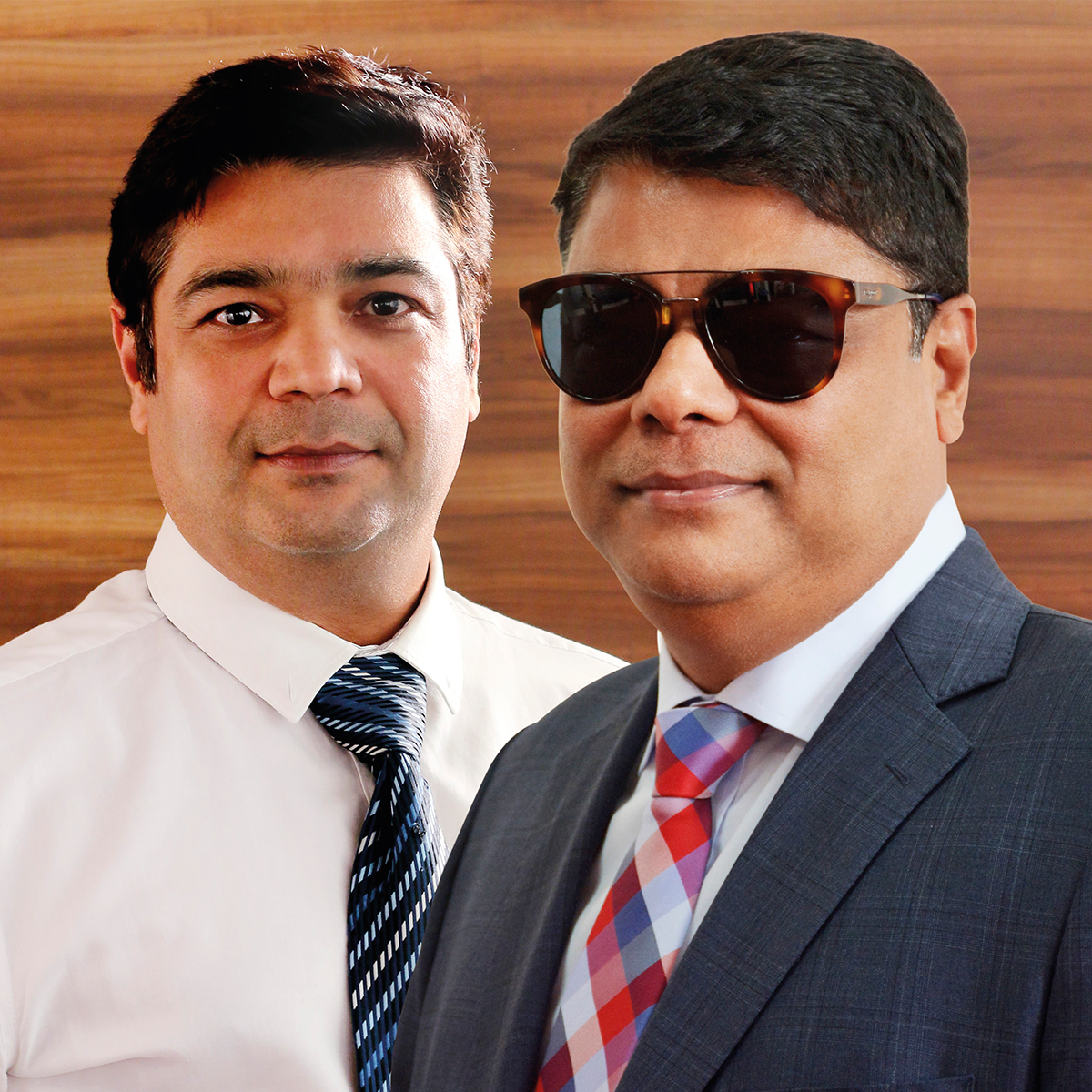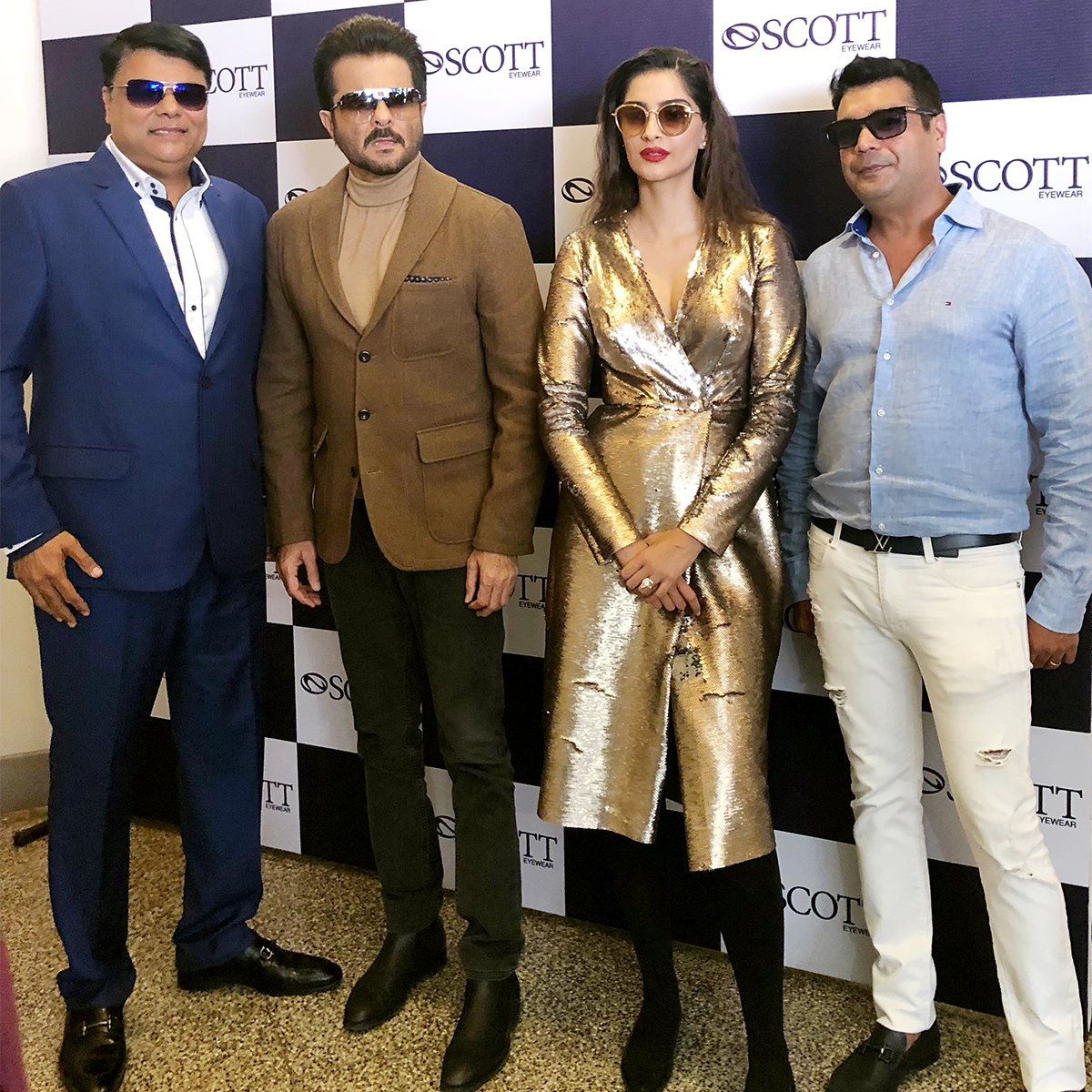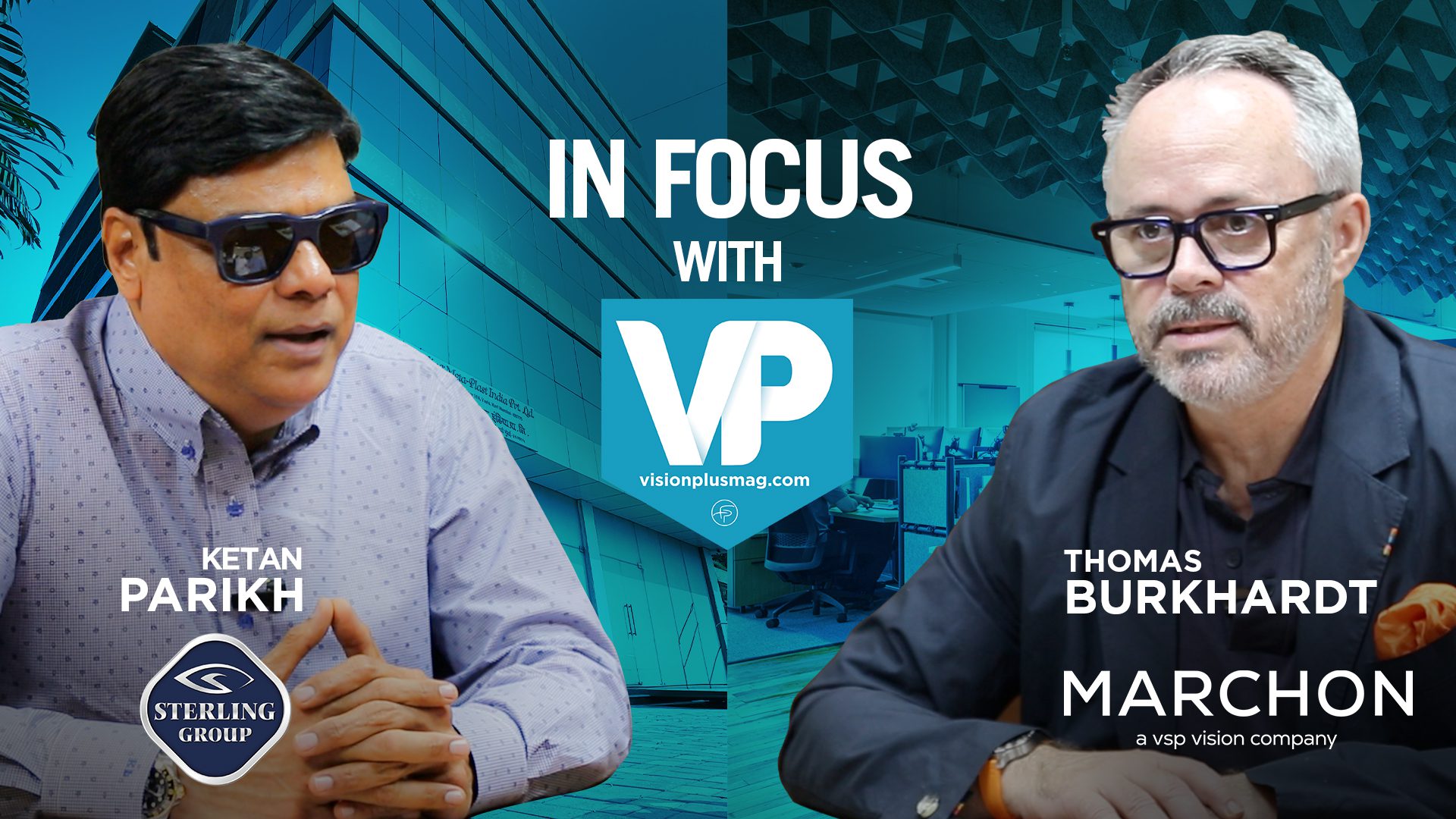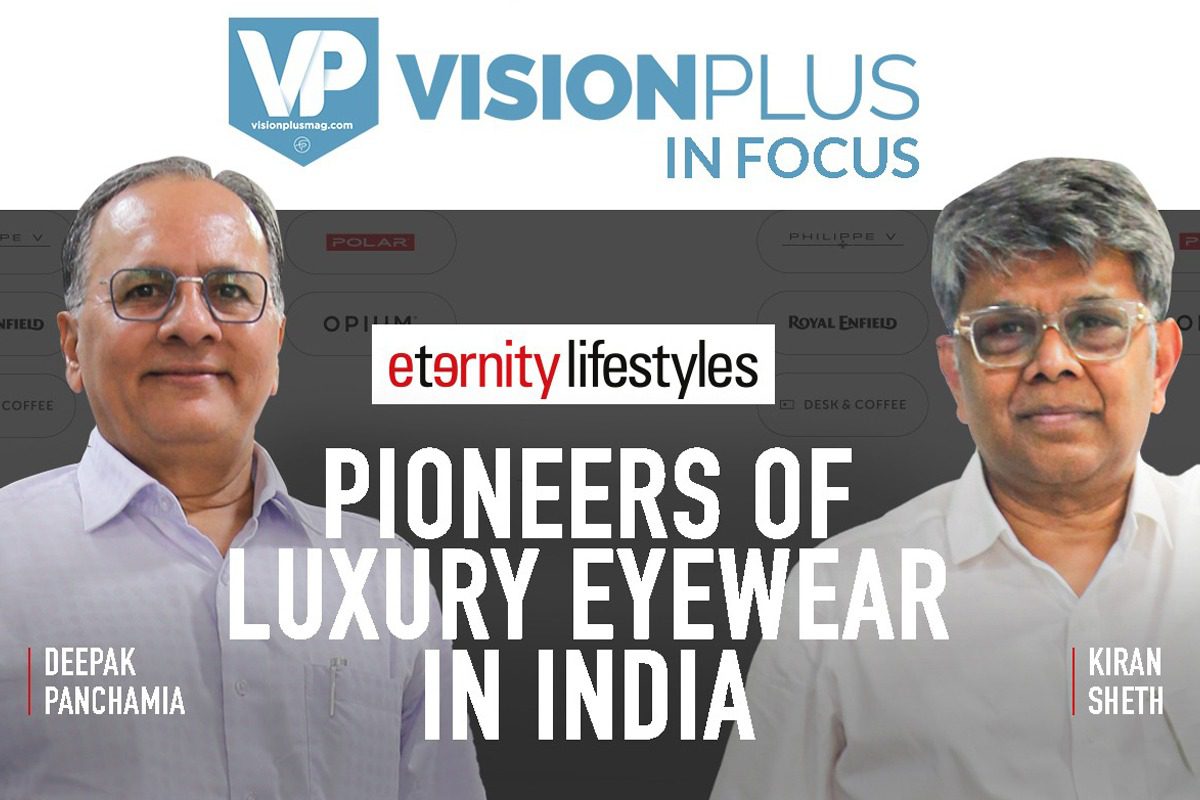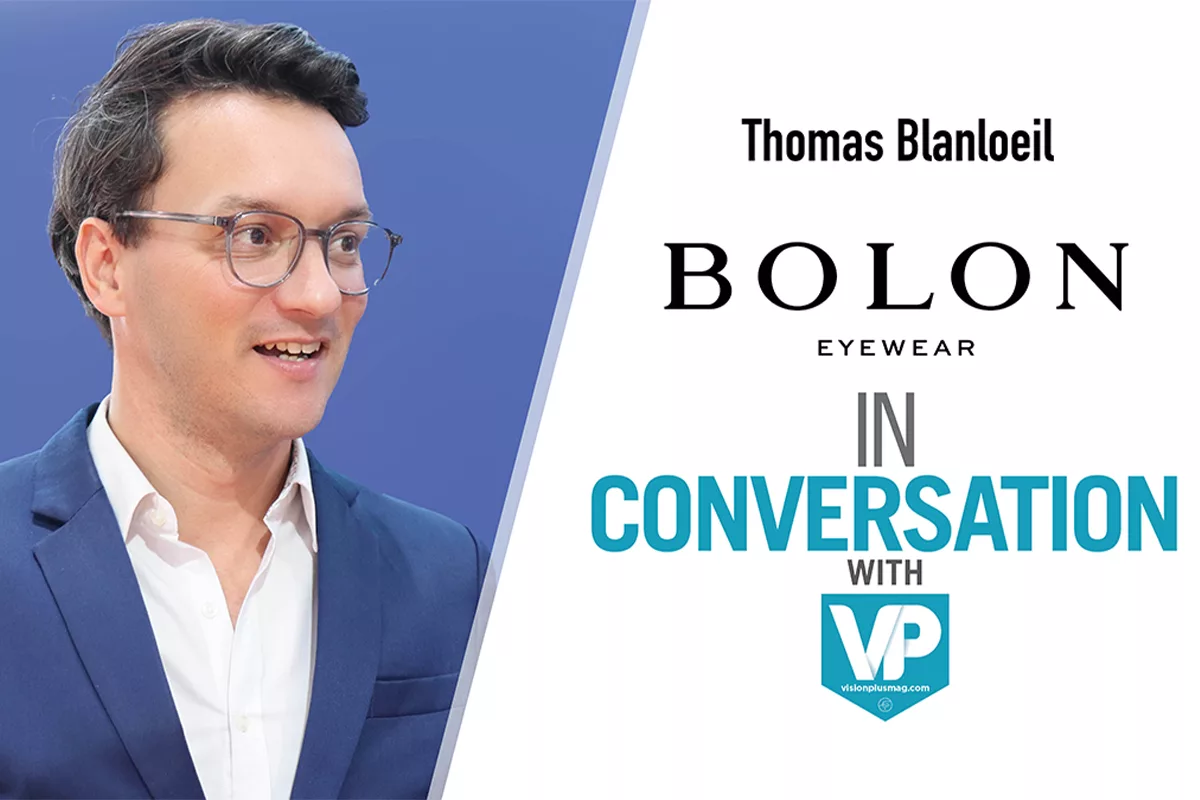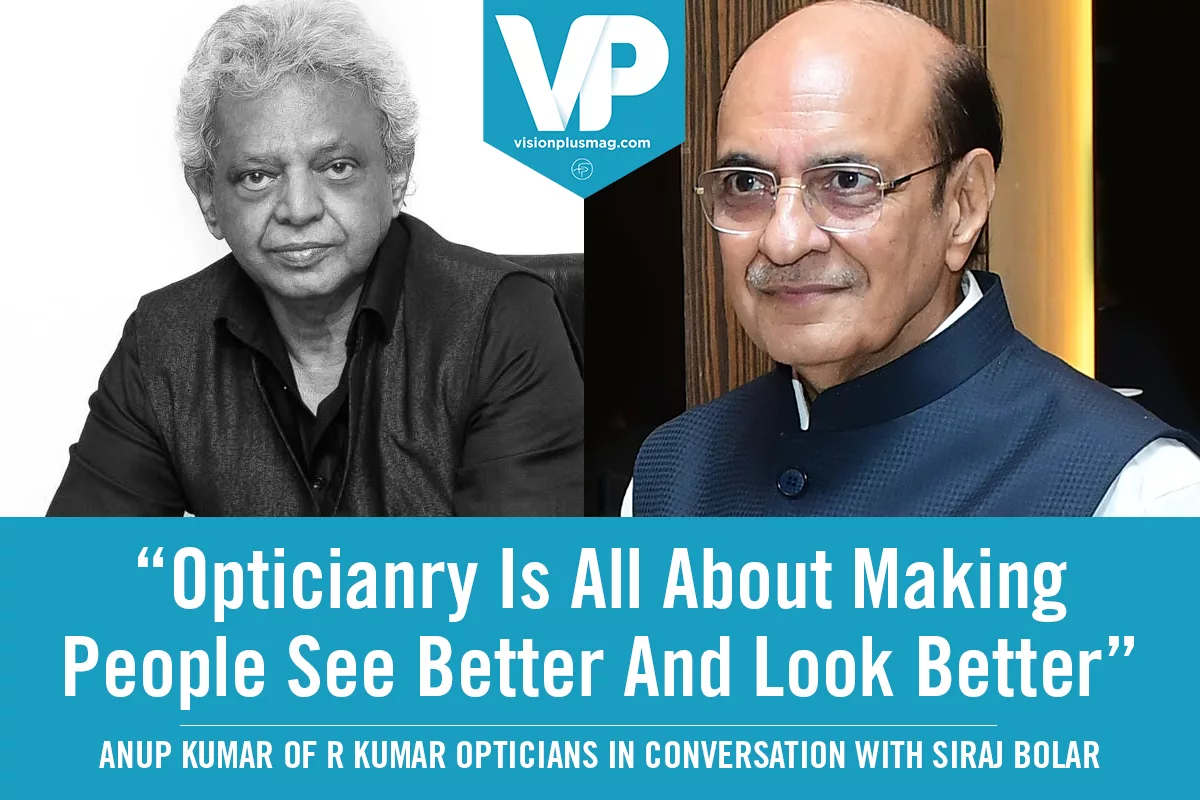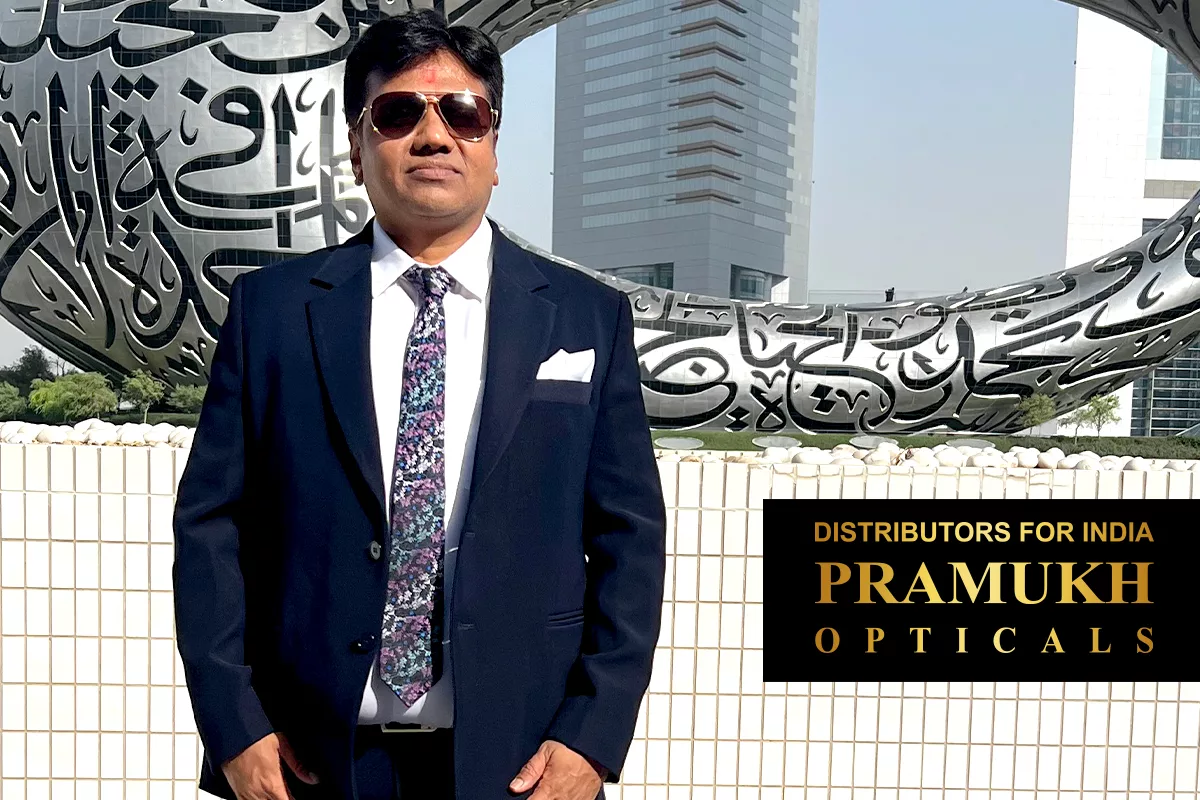VisionPlus in conversation with the stylish duo of Sterling, Ketan and Amit Parikh
With over 30 years of experience in distribution of international eyewear brands in India, Sterling pioneers in the distribution of premium and luxury eyewear brands in India. The owners of the company, Ketan and Amit Parikh, give VisionPlus a broad insight about the company and share their views on topics related to the optical industry.
VisionPlus (VP): To begin with, share with our readers, how has Sterling evolved in the last decade.
Ketan Parikh (KP): The best method to evolve is often to embrace change and that’s exactly what we have and will continue to do at Sterling. We are constantly pushing boundaries and grasping on to contemporary methods to evolve into a better, modern and a seamlessly functioning organisation. With the support of Marchon, who are a very futuristic company that encompasses all aspects of eyewear right from design, technology to retail solutions, we aim to become a much more reliable, focused and a strong partner for our customers.
VP: Brand associations are crucial to ensure brand success. Given that, how did Sterling choose to associate with the evergreen star, Anil Kapoor and his beautiful daughter, Sonam?
Amit Parikh (AP): We toyed with the idea for a while, but we wanted to make sure that we choose someone who is relatable to both, the brand the persona of Scott as well as to the core audience we cater to. Therefore, it had to be Sonam Kapoor as she is the undisputed fashion icon of the country and has a great following of millennials and non-millennials. And hence Anil Kapoor was an obvious choice as, who better than him, looks as young as he does for his age. Thus, it was a perfect match: the youth fashion icon and the evergreen, ‘young-at-heart’, just like Scott as a brand is – extremely fashionable and forever young.
VP: Indian markets have undergone quite some change post implementation of GST, how has Sterling adapted to this tide?
KP: I think GST implementation has been the biggest boon to organised players in India. Doing business has become a lot easy along with movement of goods. India has truly become one large single market without borders after the implementation of GST. Not to forget that there has been a reduction in the final price for the end consumers in this value driven market, with GST.
VP: Tell us more about the new brands under the Sterling portfolio, any recent acquisitions that you think will be the game changer for the coming months.
KP: We have four new brands that have joined our family since beginning of the year: Nautica which is an urban American lifestyle brand who are all about fashion and functionality and has a nautical inspiration behind its products. Similarly, Nautica eyewear in India has a very functional range with polarized lenses, great colours, unmatchable quality and styles that are for everyday use and yet very stylish with very attractive retail prices.
Bebe which is a very trendy, ageless, chic, sophisticated women’s brand that breaks stereotypes and that’s exactly what we have done with Bebe eyewear collection. It has very versatile sunglasses and frames made of great quality materials; the collection has an abundance of elements, combination of materials, gradient lenses, very pleasing colours and with aggressive prices it ought to become a hit amongst its consumers.
Cutler & Gross and Paul Smith. Both the brands are iconic in their own realms and are already renowned in this category. Cutler & Gross is a British brand with impeccable finish, distilled and re-engineered using cutting edge techniques and materials which are rigorously researched and applied by skilled artisans to get that perfect comfortable fit.
Paul Smith is yet another contender from Britain – they already sell through 70 countries and their newest eyewear collection is just top of the line. The superb attention to detail and respect for traditional craftsmanship makes the Paul Smith Eyewear collection truly one of a kind. We will be launching a couple more brands by the end of this year and all I can say is that they are great brands to look forward to.
VP: How well according to you are the Indian brands doing in the market? Where do you see the room for improvement?
AP: I think Indian brands have come of age. A lot of them have great potential. Sustainability is a keyword today as consumers are very well informed than ever before. In a diverse environment like ours it takes a great deal of conviction to build brands and maintain their positioning. Today there are lot of young brands that are thriving to do that. Indian brands have largely remained in the lower and affordable price segments for a while now and I’d love to see an Indian brand becoming a Tommy Hilfiger or an Armani.
VP: What inspiration can an international brand take from Indian brand’s marketing strategies or vice-versa?
KP: The ability to adapt in no time. The market in India being so dynamic with diversity every 100 kilometers there is no other way but to adapt and adapt quickly. As a result, sometimes you cannot exercise just one strategy for the entire country and often calls for quick adaptation in terms of design, distribution and marketing. Another important aspect of Indian consumers is that the majority of them prefer comfort and functionality over just following global trends blindly.
VP: How different is Indian market than global or international market?
AP: Although the eyewear markets have many similarities, the key differentiating point would be the Indian consumers. Consumers here want value for money when they buy eyewear. Multiple ownership of frames and sunglasses, though on a rise, it still has a long way to go as compared to the international market. Also, most Indian consumers conceive an optical frame as merely a functional necessity rather than a fashion accessory.
VP: What is your forecast for the eyewear industry trends that the Indian markets are likely to witness?
KP: With an increasing amount of screen time amongst consumers especially the current generation, there is a rise of eye related disorders which have risen the demand for spectacle frames even with young children. Not that we support the rise of such disorders, but one can’t help but succumb to the ever-changing world out there.
In order to uplift their social status, consumers are always looking for unique products and are open to spending high-end eyewear products owing to (especially) social media.
Additionally, improving purchasing power of consumers in our market, changing lifestyles and urbanization are positively impacting the market growth of eyewear product.
VP: Whom do you consider to be the toughest competition and how has it changed with time?
AP: The toughest competition is to combat the unorganised players in the market who purely focus on price as opposed to great service and quality of products. The second is the retailers who sell counterfeit products. Surprisingly brands like Scott, Calvin Klein, Tommy Hilfiger and many other brands are found to be counterfeited.
VP What are the initiatives taken by Sterling to help opticians do better business?
KP: We have heavily invested in integrating technology in most aspects of our business and that has helped speed up processes than before especially when it comes to supply chain. We have introduced a B2B online platform wherein customers can view our entire range of products directly and place orders with live inventory.
We have implemented some great visual merchandising projects like shop-in-shop fixtures, window displays which has helped customers to dispense the respective brand products with much ease.
We also conduct numerous brand trainings to keep our team apprised of current scenario which in turn helps them communicate and dispense better.

